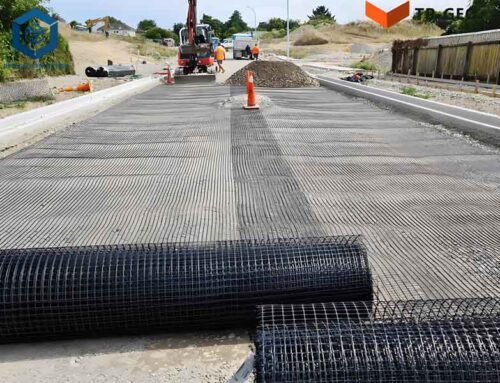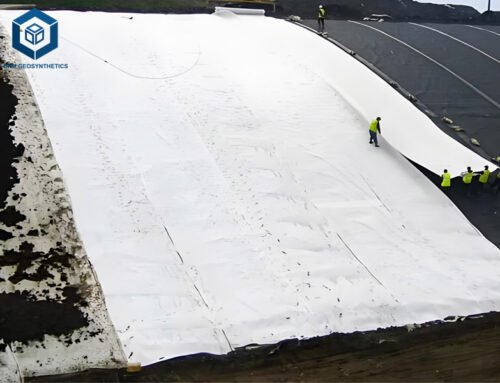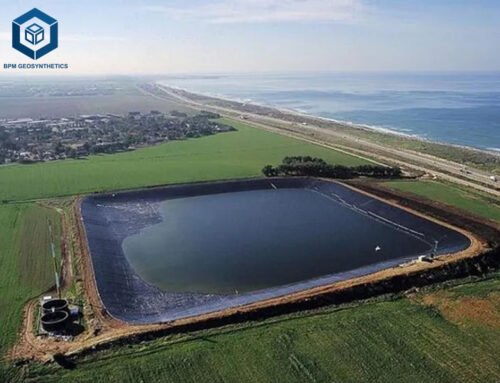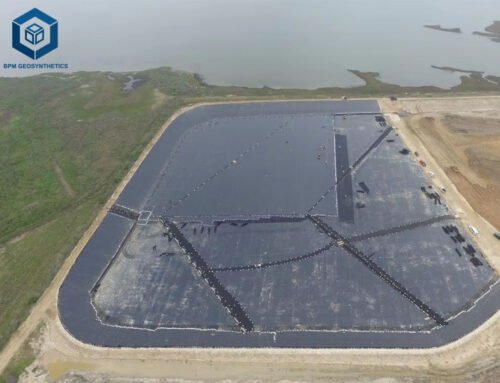Geogrid retaining walls are essential structures in modern civil engineering and landscaping, providing stability and durability for projects ranging from residential gardens to large-scale infrastructure. These walls use geogrid materials to reinforce soil, enabling taller, stronger, and more cost-effective constructions compared to traditional methods. Understanding the cost of a geogrid retaining wall is critical for project managers, engineers, contractors, and homeowners aiming to balance budget and structural integrity. This comprehensive guide explores the factors influencing geogrid retaining wall costs, provides detailed pricing data, and offers actionable insights to help you plan your project effectively.
1. What is a Geogrid Retaining Wall?
A geogrid retaining wall is a structure designed to hold back soil at an inclined angle, commonly used in landscaping, highway construction, and commercial developments. Geogrids, made from high-strength polymers like high-density polyethylene (HDPE), polypropylene (PP), or polyester (PET), are installed in horizontal layers between wall courses, extending into the soil to create a reinforced mass. This reinforcement enhances the wall’s ability to resist lateral earth pressures, allowing for taller structures, improved load distribution, and reduced risk of failure.
The global geogrid market, valued at USD 1.29 billion in 2023, is projected to reach USD 1.97 billion by 2032, growing at a compound annual growth rate (CAGR) of 4.7%. This growth of geogrids reflects the increasing demand for geogrid solutions in infrastructure projects driven by urbanization and sustainable construction practices. By understanding the cost components, you can make informed decisions to optimize your project’s budget and performance.
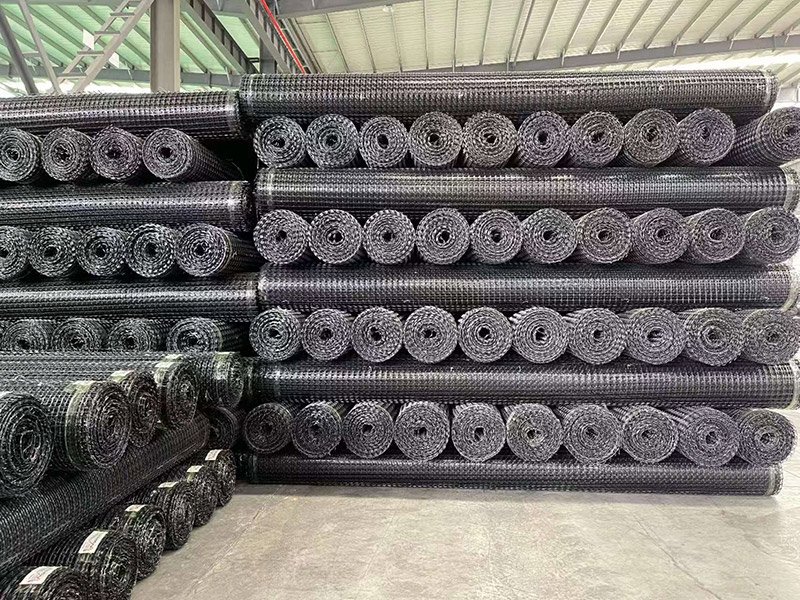
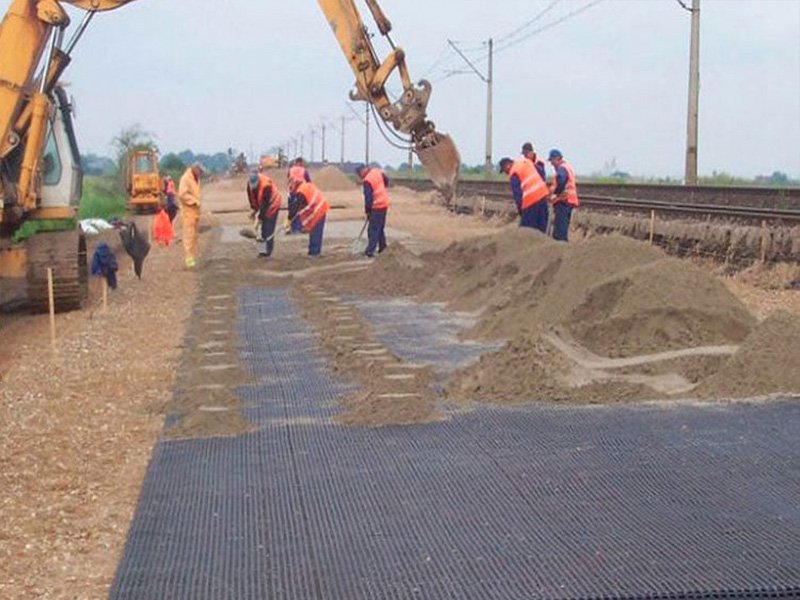
2. Factors Influencing Geogrid Retaining Wall Costs
The cost of a geogrid retaining wall varies based on multiple factors, including material type, project scale, site conditions, and installation requirements. Below, we break down the key elements that contribute to the overall cost.
2.1 Geogrid Material and Type
Geogrids come in different types—uniaxial, biaxial, and triaxial—each designed for specific applications and offering varying tensile strengths. The material and type significantly impact the cost.
- Uniaxial Geogrids:Designed for applications like retaining walls, these provide high tensile strength in one direction (up to 200 kN/m). Prices range from $0.50 to $2.50 per square meter, depending on strength and brand.
- Biaxial Geogrids:Offering balanced strength in two directions, these cost $1.00–$3.50 per square meter and are suitable for road construction and ground stabilization (20–100 kN/m).
- Triaxial Geogrids:Advanced multi-directional reinforcement for complex projects, priced at $1.50–$5.00 per square meter due to enhanced load distribution.
Material composition also affects pricing:
- HDPE:$0.50–$3.00/m², highly resistant to chemicals but less flexible.
- Polypropylene (PP):$0.80–$3.50/m², lightweight and versatile.
- Polyester (PET):$1.00–$4.00/m², ideal for high-tensile applications with excellent creep resistance.
Choosing the right geogrid depends on your project’s specific requirements, such as soil type and wall height, which we’ll discuss further below.
2.2 Wall Height and Geogrid Layers
The height of the retaining wall determines the number of geogrid layers needed, directly impacting material costs. Walls taller than 3–4 feet typically require geogrid reinforcement to ensure stability. For example:
- Walls up to 10 feet may require 3–5 layers of uniaxial geogrid, with each layer extending 60–70% of the wall height into the backfill.
- Walls over 10 feet may need stronger geogrids (e.g., 5 Series) and more layers, increasing costs.
Each layer adds to the material cost, with an average of $0.50–$5.00 per square meter per layer, depending on the geogrid type. Taller walls also require longer geogrid lengths, further increasing expenses.
2.3 Soil Conditions
Soil type significantly affects geogrid requirements and costs. Sandy soils with lower shear strength (friction angle of 32° or better) require more reinforcement than cohesive clay soils (friction angle of 27° or better). Poor soil conditions, such as high clay content or poor drainage, may necessitate additional layers or stronger geogrids, increasing costs. A geotechnical engineer’s soil analysis can help determine the optimal geogrid specifications, potentially saving costs by avoiding over-engineering.
2.4 Installation and Labor Costs
Labor costs vary based on project complexity, location, and contractor expertise. Installing a geogrid retaining wall involves:
- Site Preparation:Excavation, leveling, and compacting the base can cost $5–$15 per square foot, depending on site conditions.
- Geogrid Installation:Precise placement and tensioning of geogrid layers require skilled labor, adding $2–$5 per square foot.
- Backfill and Compaction:Proper backfill material (e.g., gravel or recycled concrete aggregate) and compaction equipment can cost $10–$30 per cubic yard.
Using local or recycled backfill materials can reduce costs by up to 30–50% compared to imported materials.
2.5 Retaining Wall Blocks or Facing
The facing material, such as concrete blocks, natural stone, or gabions, impacts both cost and aesthetics. Common options include:
- Concrete Blocks:$5–$15 per square foot, durable and widely available.
- Natural Stone:$15–$30 per square foot, offering a premium aesthetic but higher cost.
- Gabions:$10–$20 per square foot, flexible and ideal for drainage-heavy applications.
The choice of facing material should align with the project’s aesthetic and functional requirements, balancing cost and performance.
2.6 Drainage Systems
Proper drainage is critical to prevent hydrostatic pressure buildup, which can cause wall failure. A drainage blanket (a 12-inch layer of washed gravel wrapped in geotextile fabric) costs $5–$10 per square foot. Additional drainage pipes or gravel layers may add $2–$5 per linear foot. Effective drainage reduces long-term maintenance costs by minimizing erosion and settlement issues.
2.7 Environmental and Site Conditions
Environmental factors, such as UV exposure, freeze-thaw cycles, and seismic activity, influence geogrid selection and installation costs. UV-resistant, PVC-coated geogrids cost 10–20% more but offer greater durability. Seismic zones may require stronger geogrids and additional reinforcement, increasing material costs by 15–25%. Site-specific challenges, like steep slopes or limited space, may necessitate specialized equipment or techniques, adding $5–$10 per square foot to installation costs.
3. Geogrid Retaining Wall Cost Breakdown
To provide a clear picture, let’s break down the cost of a typical geogrid retaining wall project. The following estimates are based on a 100-square-foot, 5-foot-tall wall with uniaxial geogrid reinforcement, standard concrete blocks, and average site conditions.
| Component | Cost Range | Estimated Cost (100 sq ft) |
| Geogrid Material (3 layers, 4 ft long) | $0.50–$2.50/m² | $150–$750 |
| Concrete Blocks | $5–$15/sq ft | $500–$1,500 |
| Site Preparation | $5–$15/sq ft | $500–$1,500 |
| Installation Labor | $2–$5/sq ft | $200–$500 |
| Backfill Material | $10–$30/cubic yard | $300–$900 |
| Drainage System | $5–$10/sq ft | $500–$1,000 |
| Total | $27.50–$77.50/sq ft | $2,150–$6,150 |
Total Cost Range: $2,150–$6,150 for a 100-square-foot, 5-foot-tall wall, or $21.50–$61.50 per square foot.
Costs can vary significantly based on project specifics. For example, using recycled concrete aggregate as backfill can reduce costs by 10–30%, while premium natural stone facing can increase costs by 20–50%.
4. Cost Comparison: Geogrid Retaining Walls vs. Traditional Methods
Geogrid retaining walls are often more cost-effective than traditional cast-in-place concrete walls, which require extensive labor, massive footings, rebar, and poured concrete. Here’s a comparison:
- Geogrid Retaining Walls:$20–$60 per square foot, including materials and labor. Benefits include reduced excavation, faster installation, and flexibility with backfill materials.
- Cast-in-Place Concrete Walls:$50–$100 per square foot, due to higher material and labor costs. These walls are more durable but less flexible and require deeper foundations.
Geogrid walls can save up to 75% on construction costs and halve build times compared to traditional concrete walls, making them a popular choice for budget-conscious projects.
5. Geogrid Specifications and Parameters
Selecting the right geogrid involves understanding key specifications and parameters to ensure optimal performance and cost-efficiency. Below are the critical factors to consider:
5.1 Tensile Strength
Tensile strength, measured in kN/m, determines the geogrid’s ability to withstand lateral earth pressures. Common ranges include:
- Uniaxial: 20–200 kN/m, ideal for retaining walls.
- Biaxial: 20–100 kN/m, suitable for road bases and stabilization.
- Triaxial: 30–150 kN/m, for complex load distribution.
Higher tensile strength geogrids cost more but allow for fewer layers, potentially reducing overall costs.
5.2 Aperture Size
The size of the geogrid’s openings (10–100 mm) affects soil interlocking. Larger openings are suitable for coarse soils, while smaller openings work better with fine-grained soils. Proper aperture size ensures effective soil reinforcement, reducing the need for additional layers.
5.3 Material Durability
Geogrids must resist environmental degradation, such as UV exposure and chemical corrosion. PVC-coated polyester or HDPE geogrids offer superior durability, with lifespans exceeding 50 years in most conditions. These cost 10–20% more but reduce long-term maintenance expenses.
5.4 Installation Specifications
Proper installation is critical to maximize geogrid performance and minimize costs. Key guidelines include:
- Embedment Length:Geogrid should extend 60–70% of the wall height into the backfill (e.g., 3–3.5 feet for a 5-foot wall).
- Layer Spacing:Typically 8–24 inches vertically, depending on wall height and load conditions.
- Compaction:Infill soil should be compacted in 8-inch lifts to 95% Standard Proctor Density, using hand-operated equipment within 3 feet of the wall face.
- Orientation:Geogrid strength direction should be perpendicular to the wall face for optimal load resistance.
Following these specifications ensures structural integrity and prevents costly repairs due to improper installation.
6. Cost-Saving Tips for Geogrid Retaining Walls
While geogrid retaining walls are cost-effective, strategic planning can further reduce expenses without compromising quality. Here are actionable tips:
- Use Local or Recycled Backfill:Locally sourced or recycled concrete aggregate can save 10–30% on backfill costs.
- Optimize Geogrid Selection:Conduct a soil analysis to determine the minimum number of layers and tensile strength required, avoiding over-engineering.
- Choose Cost-Effective Facing:Concrete blocks or gabions are more affordable than natural stone while maintaining durability.
- Hire Experienced Contractors:Skilled contractors ensure proper installation, reducing the risk of costly repairs. Ask about their experience with geogrid projects and request references.
- Bulk Purchasing:Buying geogrid in bulk can reduce material costs by 5–15%.
- Plan for Drainage:Investing in a proper drainage system upfront can save significant maintenance costs by preventing erosion and settlement.
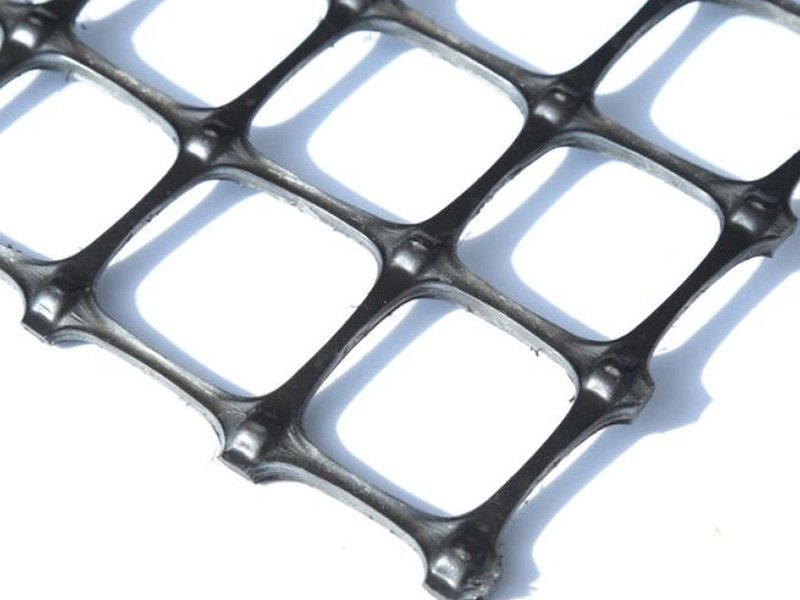
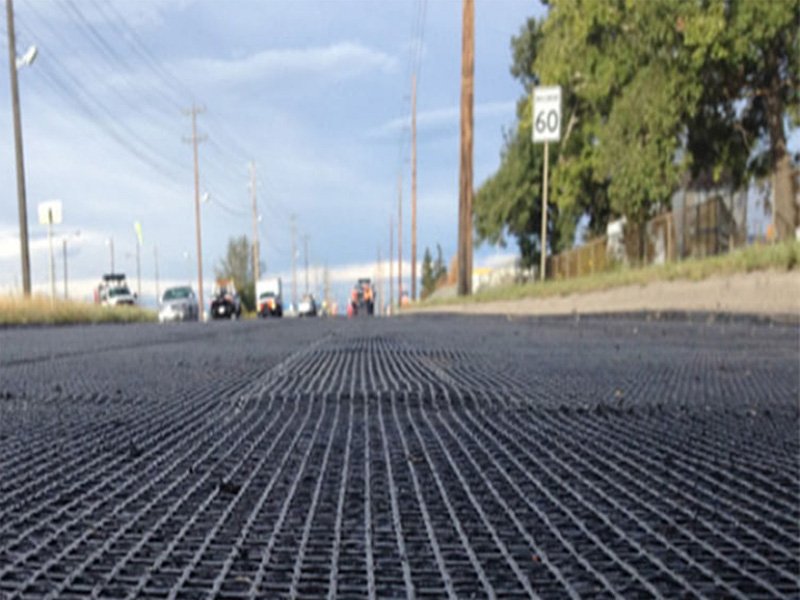
7. Long-Term Benefits of Geogrid Retaining Walls
While initial costs are a key consideration, the long-term benefits of geogrid retaining walls make them a worthwhile investment:
- Durability:High-quality geogrids resist degradation, offering lifespans of 50+ years with minimal maintenance.
- Cost Savings:Reduced foundation requirements and faster installation lower overall project costs.
- Flexibility:Geogrids allow for steeper slopes and taller walls, maximizing usable land in constrained spaces.
- Environmental Impact:Using recycled materials and less concrete reduces the environmental footprint.
- Aesthetic Versatility:Various facing options, from concrete blocks to vegetated slopes, enhance project aesthetics.
These benefits contribute to lower lifecycle costs, making geogrid retaining walls a cost-effective choice for long-term stability and performance.
8. Case Studies: Real-World Geogrid Retaining Wall Costs
To illustrate the cost dynamics, let’s examine two hypothetical case studies based on common project scenarios.
Case Study 1: Residential Landscaping Project
Project Details: A 4-foot-tall, 50-square-foot retaining wall for a residential garden, using uniaxial geogrid, concrete blocks, and local backfill.
- Geogrid:2 layers, 3 feet long, $1.50/m² = $270
- Concrete Blocks:$10/sq ft = $500
- Site Preparation:$8/sq ft = $400
- Installation Labor:$3/sq ft = $150
- Backfill:$15/cubic yard = $225
- Drainage System:$6/sq ft = $300
- Total Cost:$1,845 ($36.90/sq ft)
Key Savings: Using local backfill and standard concrete blocks kept costs low, while proper drainage ensured long-term stability.
Case Study 2: Commercial Highway Embankment
Project Details: A 10-foot-tall, 200-square-foot retaining wall for a highway embankment, using 5 Series uniaxial geogrid, natural stone facing, and recycled concrete aggregate.
- Geogrid:5 layers, 7 feet long, $2.50/m² = $3,250
- Natural Stone:$20/sq ft = $4,000
- Site Preparation:$12/sq ft = $2,400
- Installation Labor:$4/sq ft = $800
- Backfill:$12/cubic yard = $1,200
- Drainage System:$8/sq ft = $1,600
- Total Cost:$13,250 ($66.25/sq ft)
Key Savings: Recycled concrete aggregate reduced backfill costs by 20%, while high-strength geogrid minimized the number of layers needed.
9. How to Get Accurate Cost Estimates
Obtaining accurate cost estimates requires careful planning and professional input. Follow these steps:
- Conduct a Site Assessment:Hire a geotechnical engineer to analyze soil conditions and determine geogrid requirements.
- Request Multiple Quotes:Contact several suppliers for geogrid and facing material prices to compare costs.
- Consult a Professional Engineer:For walls over 6 feet, a licensed civil engineer can provide a project-specific design, ensuring compliance with local regulations.
- Use Design Software:Tools like MagnumStone’s Retaining Wall Design & Analysis Software or TensarSoil can estimate geogrid quantities and costs based on site conditions.
- Check Local Regulations:Verify permitting requirements, as some areas mandate engineer-designed walls for heights over 4 feet.
By following these steps, you can avoid unexpected costs and ensure your project meets industry standards.
10. Conclusion
Geogrid retaining walls offer a cost-effective, durable, and versatile solution for soil stabilization in various applications. With costs ranging from $20 to $60 per square foot, these walls are significantly more affordable than traditional concrete walls, offering savings of up to 75% while maintaining structural integrity. By carefully selecting the appropriate geogrid type, optimizing installation, and planning for drainage, you can minimize costs and maximize long-term performance. Whether you’re a homeowner tackling a DIY landscaping project or an engineer designing a highway embankment, understanding the factors influencing geogrid retaining wall costs is essential for informed decision-making. Invest in high-quality materials and professional expertise to ensure a stable, cost-effective, and aesthetically pleasing retaining wall that stands the test of time.
Please contact BPM Geosynthetics for samples and quotes to build a durable, eco-friendly driveway.

